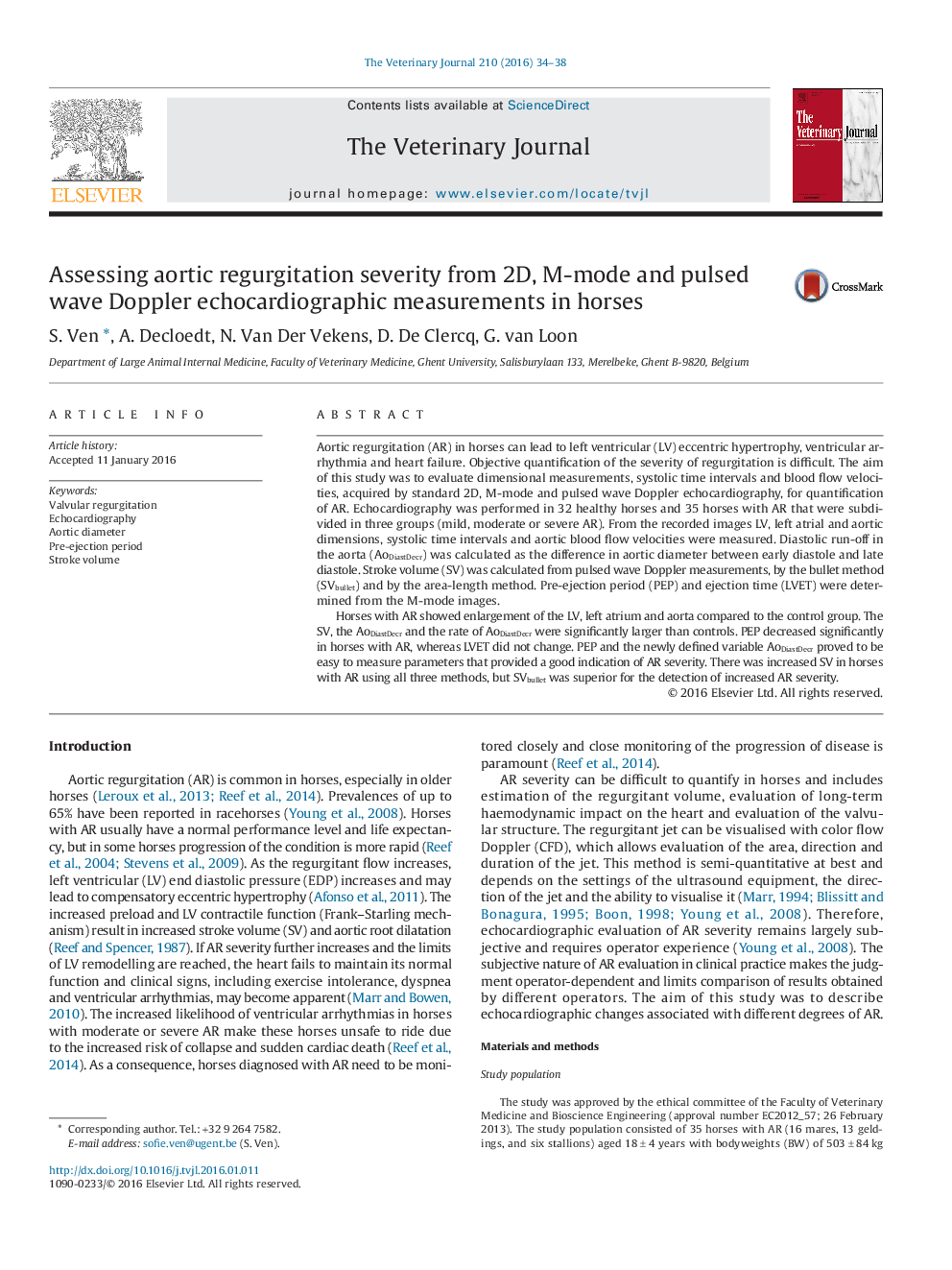| کد مقاله | کد نشریه | سال انتشار | مقاله انگلیسی | نسخه تمام متن |
|---|---|---|---|---|
| 2463726 | 1555233 | 2016 | 5 صفحه PDF | دانلود رایگان |

• Horses with and without aortic regurgitation were compared using echocardiography.
• Suitable variables for quantification of aortic regurgitation were identified.
• Aortic diastolic decrease was a reliable indicator of the severity of aortic regurgitation.
• The study used different breeds of horses and measurements were scaled for bodyweight.
• The study developed reference values for assessing the severity of aortic regurgitation.
Aortic regurgitation (AR) in horses can lead to left ventricular (LV) eccentric hypertrophy, ventricular arrhythmia and heart failure. Objective quantification of the severity of regurgitation is difficult. The aim of this study was to evaluate dimensional measurements, systolic time intervals and blood flow velocities, acquired by standard 2D, M-mode and pulsed wave Doppler echocardiography, for quantification of AR. Echocardiography was performed in 32 healthy horses and 35 horses with AR that were subdivided in three groups (mild, moderate or severe AR). From the recorded images LV, left atrial and aortic dimensions, systolic time intervals and aortic blood flow velocities were measured. Diastolic run-off in the aorta (AoDiastDecr) was calculated as the difference in aortic diameter between early diastole and late diastole. Stroke volume (SV) was calculated from pulsed wave Doppler measurements, by the bullet method (SVbullet) and by the area-length method. Pre-ejection period (PEP) and ejection time (LVET) were determined from the M-mode images.Horses with AR showed enlargement of the LV, left atrium and aorta compared to the control group. The SV, the AoDiastDecr and the rate of AoDiastDecr were significantly larger than controls. PEP decreased significantly in horses with AR, whereas LVET did not change. PEP and the newly defined variable AoDiastDecr proved to be easy to measure parameters that provided a good indication of AR severity. There was increased SV in horses with AR using all three methods, but SVbullet was superior for the detection of increased AR severity.
Journal: The Veterinary Journal - Volume 210, April 2016, Pages 34–38